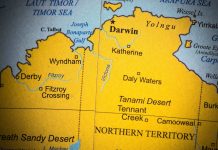SPAIN is renowned as a land of festivals, hosting unique events throughout the year in its many cities and villages. The running of the bulls in Pamplona and La Tomatina in Valencia are the two fiestas that have gained the most fame internationally.
On the horns
For the brave, the daring or simply insane, Spain’s famed running of the bulls is an occasion not for the fainthearted.
Held between July 6 and 14 every year, this spectacle takes place in villages across Spain and Portugal.
Running alongside a herd of agitated bulls might seem crazy, but year after year thousands of adrenalin-seeking tourists head to Pamplona’s Sanfermines (Fiesta de San Fermín) to take part in the most famous running of bulls event.
Every morning during Sanfermines, six bulls are let loose from their corrals to charge through the town square that leads to the bullring, where a bullfight takes place following the run.
Participants, known as mozos, race with the bulls, aiming to stay well in front of them so as not to get trampled or gored.
Those who wish to take part must enter the course before 7.30am.
At 8am a rocket is fired to alert runners that the corral has been opened. Once all the bulls have been let out, a second rocket is fired and both the participants and the bulls begin running down the 825m stretch. The run typically lasts less than 4 minutes.
A third rocket is fired when all of the bulls have entered the bullring, and a fourth signals that all of the bulls have been rounded up and secured in a bullpen, ending the run.
A tradition that dates back to the 14th century when bullfighting was a popular pastime, the running of the bulls continues to gain popularity, evolving into the massive event that it is today.
However, there are increasing concerns from animal activists as to the treatment of the bulls. During the festival, People for the Ethical Treatment of Animals hold processions protesting against animal cruelty.
There is also growing concern for the safety of the runners: since records began, 15 people have been killed during Pamplona’s bull run.
Many other runners are injured (including being gored) each year.
Despite the possible risks and a growing amount of public opposition, the festival still attracts thousands of keen tourists.
Various tour packages are available for the Pamplona running of the bulls that include transport and accommodation for the duration of the festival.
Those travellers who don’t want to spend a full week in Pamplona can stay in nearby Vitoria and catch an early train to the town on the day they wish to see the bulls run.
The train runs regularly between Vitoria and Pamplona, and the journey takes an hour.
The train from Barcelona to Pamplona takes about four hours and costs EUR30. Busses also travel the route and cost about EUR25. Trains from Madrid to Pamplona take three hours and cost about EUR60.
There are regular flights between Madrid, Barcelona and Pamplona, but these are more expensive.
Seeing red
Tomatoes play a pivotal role in Spanish culture, and not just in cuisine. La Tomatina is the biggest food fight in the world, involving thousands of people throwing tonnes of tomatoes.
The famous festival has been held annually on the last Wednesday in August for more than 60 years. Large numbers of tourists trek to the small Valencian town of Buñol, 30km inland from the Mediterranean Sea and about 400km south of Barcelona, to throw the over-ripe red fruit at each other.
With a population of just 9000 during non-festival times, the number of visitors inBuñol swells to more than 40,000 during the celebrations.
The tomato brawl itself only lasts about an hour: long enough to transform the tiny village, which lies on the Buñol River, into a red battlefield.
In preparation, locals cover their shops and houses with plastic sheets and tarpaulins. Just before 11am, more than 100 tonnes of tomatoes are trucked into the town’s main square, Calle del Cid, where crowds of people – wearing goggles and dressed in traditional white clothing – are waiting to grab their first tomato.
At exactly 11am, a contest takes place between a few of the town’s locals: a ham is hoisted to the top of a greased pole and thecontestants scramble to climb to the top of the ‘palo jabón’ and untie the ham. The ham falling off the pole marks the beginning of the fight: a canon is fired and all the tomatoes are released from the trucks.
Pandemonium ensues as everyone scrambles for the tomatoes and starts throwing them. It is thought that about 150,000 tomatoes – grown especially for the festival – are used during the hour.
When the canon is fired for the second time an hour later, everyone must stop throwing tomatoes. A sea of red juice flows through the streets carrying shoes and other items of clothing that have been ripped off people during the chaos.
The local fire trucks then roll in to hose down the streets while participants trudge towards the river for a cleansing dip.
There are many theories about how La Tomatina began but the most common belief is that it originated in 1945 with a group of young men throwing vegetables during a town celebration.
Every year after that, these same people arrived with their own tomatoes to repeat the fight, until it eventually became embedded in Buñol’s culture.
La Tomatina has been recognised as an official celebration since 1957 and has continued to grow in size and reputation since then – despite a brief period during the 1970s when it was suspended for having no religious significance.
It is now a week-long fiesta involving music, dance and fireworks honouring Buñol’s patron saint, St Louis Bertrand.
Most tourists travel to Buñol just for the day of the tomato fight; however, some like to arrive a few days before to experience the entire festival.
Many tour companies offer La Tomatina packages that include accommodation and transport to and from the festival. These are a popular choice for young backpackers; however, La Tomatina is just as easy to experience without a tour guide.
Regular trains and busses operate between Buño, Valencia (an hour away) and Madrid. As there is limited accommodation in Buñol, most tourists stay in Valencia. It is advisable to make all booking well in advance of the festival.
Getting there
Various airlines fly from Perth and Sydney to Madrid and Barcelona, starting at $1500 return. Prices depend on travel dates and departure locations.


























